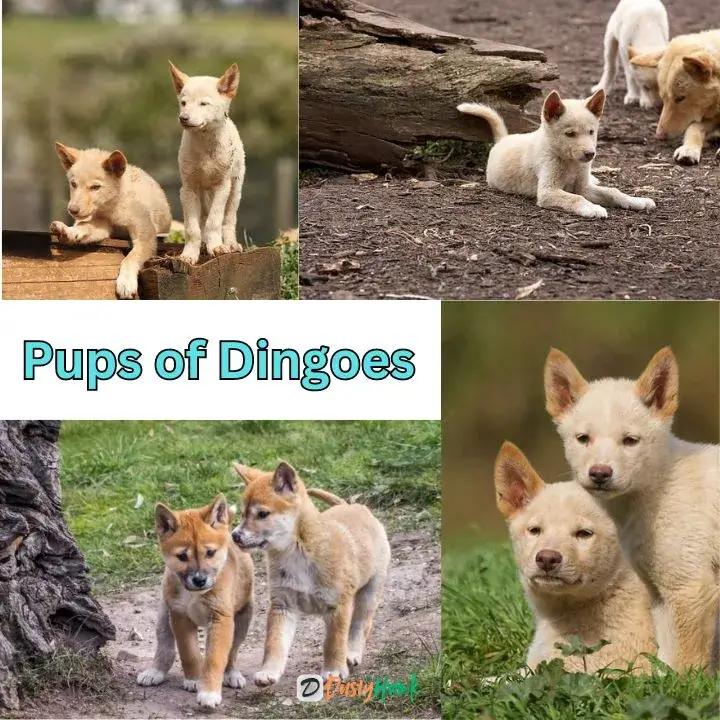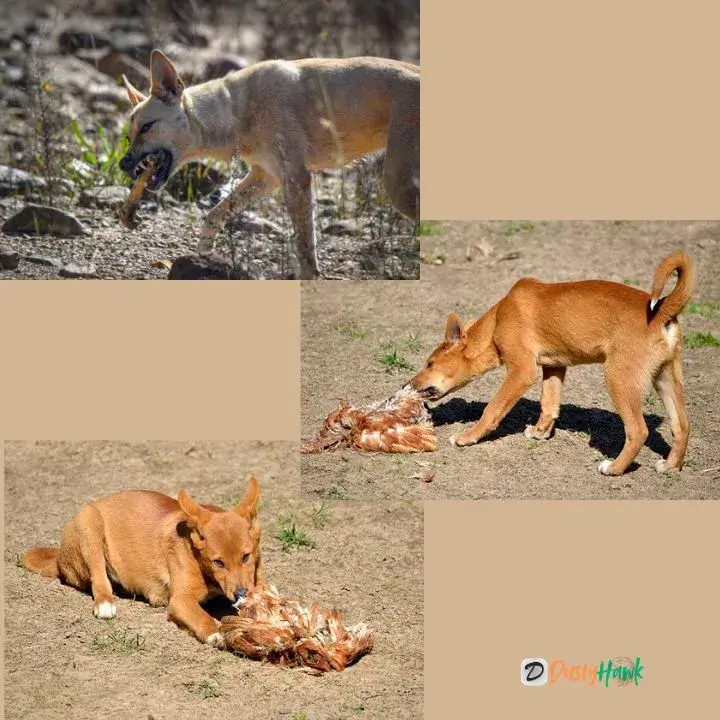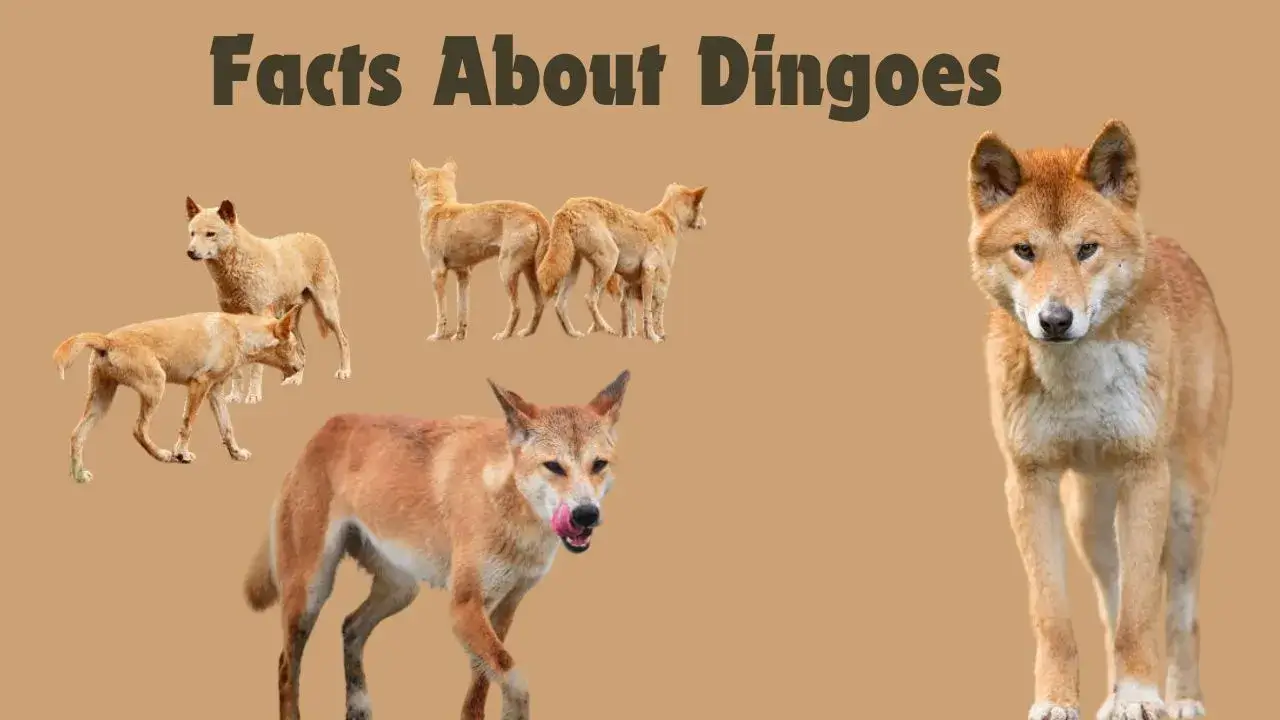Dingoes are one of the most fascinating animals found in Australia. Dingoes are famous for their unique behavior, characteristics, and ecological role. In this article we will discover most common facts about dingoes, and also explore their biology, behavior, and cultural significance.
Whether you are a wildlife lover or a normal person who is curious about these unique creatures, this article will definitely provide a brief overview of everything you need to know regarding facts about dingoes.
Contents:
What is a Dingo?
The dingo (Canis lupus dingo) is a sub-species of gray wolf and it is native of Australia. It is believed that Dingoes have arrived in the Australia around 4,000 years ago. As a result they adopted the topography of continent very well and became continent’s top predators over the time.
Dingoes can also called a wild dogs because they have most of features like a dog like lean body, large ears and bushy tails. Below are the some interesting facts about dingoes that show the unique features of dingoes.
Physical Characteristics

- Size: Dingoes are about 18 to 24 inches tall at the shoulder and generally have weight between 15 to 30 pounds.
- Color: Dingoes have fur but not dense like wolf, and its color varies from yellow to reddish-brown. Most of dingoes have white markings on the face, tail and paws.
- Eyes: Mostly dingoes have amber or brown colored eyes with almond shape.
Habitat of Dingoes
As we mentioned in the starting of this article that dingoes arrived in the Australia around 4,000 years ago and they adopted the environment of the continent and now are the top predators of the continent.
They adopted all the environment across Australia, including deserts, grasslands, and forests. They are found in almost every part of the continent except for Tasmania and some urban areas. Here are some key facts about dingoes related to their habitats:
Key Habitats
- Deserts: In deserts, dingoes often hunt for small mammals and reptiles.
- Coastal Regions: Dingoes are best known for scavenger of beaches as they scavenge from beaches and hunt marine animals too.
- Forests: Dingoes flourished in the forested areas, because they can find abundant prey in forests.
Social Structure and Behavior
One of the most interesting facts about dingoes is their social structure. Unlike many of the pet dogs, dingoes form small packs consisting of a breeding pair and their offspring.
How Dingoes Live Together in Packs
- Hierarchy: Dingoes follow a well-defined social hierarchy, in which the group is led by a dominant pair called as alpha pair.
- Territorial: Dingoes defend for their territories against intruders.
- Communication: Dingoes communicate to each other through a range of vocals, like howls, barks, and growls.
Diet and Hunting Techniques
Dingoes are carnivores and mainly hunt in packs or groups which allow them to take down larger prey. They eat variety of animals, and also feed on dead animals. Here are some interesting facts about dingoes regrading their diet:
Common Prey
- Kangaroos: Kangaroos are found in a large area of Australia, and larger packs of dingoes can hunt kangaroos, which are a significant source of food.
- Rabbits: These small mammals are primary source of their food.
- Birds and Reptiles: Dingoes often prey on birds, lizards, and small rodents.
Hunting Strategies
- Teamwork: As we told that dingoes hunt in packs, this type of cooperative hunting allow then to hunt larger animals too.
- Stamina: Dingoes have got a really energetic body. Their endurance allows them to chase their prey over a long distances.
Reproduction in Dingoes
Dingoes mate once a year on their breeding season which occurs between March and June. Here are some important facts about dingoes related to their reproduction:
Mating and Gestation
- Mating Rituals: Males attract a female by play-fighting and vocalizations.
- Gestation Period: Gestation period lasts about 63 days, after which female gives birth to 2-8 pups.
Pup Development

- Weaning: Pups usually drink their mother’s milk for around 8 weeks from birth,
- Independence: Usually pups of dingoes stay with their parents around 6 months.
Lifespan of Dingoes
Dingoes live about 10-15 years in the the wild, but some can live longer in protected and favorable environments. Some of other factors that can influence the lifespan of dingoes are food availability, habitat conditions, and threats from humans or other animals.
If dingoes get protected environments from dangers, they can live up to 16 years or more. Understanding lifespan of dingoes, helps highlight the advantage of conservation efforts to ensure their survival in wild.
Conservation Status and Threats
As we mentioned that dingoes have a great adaptability factor but still they face various threats that impact their populations. Here are some major facts about dingoes regarding their threats:
Threats to Dingoes
- Habitat Loss: Various of anthropogenic activities like agricultural expansion, urban development have reduce their natural habitats.
- Hybridization: In the continent this can be seen very often that crossbreeding of dingoes with domestic dogs is done, that is leading to genetic dilution, affecting their purity and survival.
- Problems with Farmers: Farmers see dingoes as most problematic creature, as they spoil the crops, so farmers often kill them.
What Can Be Done to Help Protect Dingoes
Protection of dingoes is very necessary for maintaining ecological balance in nature. Here are some effective ways to help ensure their survival:
1. Habitat Conservation
Preservation of natural habitat of dingoes is one of most needed this to protect dingoes. This include protecting land from extensive agriculture and decreasing urban development in their natural habitats.
2. Limit Crossbreeding
Crossbreeding of domestic dogs with dingoes should be banned or if done it should be done in limit. And owner of pets should make sure that their domestic dogs must not roam freely in dingo habitats.
3. Public Education
Organizing educational programs can lead people to know about the importance of preserving dingoes. These educational programs raise awareness among people about ecological role of these unique animals.
4. Research and Monitoring
Government should make teams to research on dingoes behaviors which can help in conservation of dingoes. And also monitoring their numbers and health is vital for understanding their needs for survival.
5. Community Involvement
Including local communities in conservation of dingoes can help conservation of dingoes a lot. Involving Indigenous groups can also bring traditional knowledge to conservation practices.
Why Is It Important to Protect Dingoes

Protection of dingoes is so much important, here are several reasons and facts about dingoes regarding to their protection:
1. Ecological Balance
One of the vital reason for protection of dingoes is that they play a key role in controlling population of prey species such a kangaroos and rabbits. This helps in maintaining the food chain in ecosystem.
2. Cultural Significance
Dingoes are from more than 4000 years in Australia. For, many Indigenous Australians, dingoes hold cultural and spiritual importance. Protecting dingoes helps preserve these cultural and traditional values.
3. Biodiversity
Dingoes are only wild dog that are native to Australia, so they contribute to the country’s unique biodiversity. Their extinction can have a worst effect on the whole ecosystem.
4. Scientific Interest
Studies on dingoes provide a valuable insights of the behavior and adaptability of wild canines. This helps science in knowing the core vitals of adaptability.
Fun Facts About Dingoes
Dingoes have really some fun facts. Here are some of these fun facts about dingoes that highlight their uniqueness:
- Vocal Howlers: Dingoes produce a range of vocal sounds, which can sometimes very horrifying and some times it is so funny to hear.
- Survival Experts: Dingoes can really adapt diverse and this can be seen through their history of existence in Australia from last 4000 years.
- Clever Hunters: Dingoes are very intelligent and they use very great strategies and hunt with keeping teamwork in mind.
- Lone Wolves: Mainly dingoes hunt in packs but if they are in a area where is shortage of resources then dingoes can be solitary hunters there.
- Historical Significance: Dingoes are the only wild dog native to Australia, making it an essential part of the Australia’s biodiversity.
Final Thoughts on Facts About Dingoes
Knowing these facts about dingoes helps us know about this amazing species. Dingoes have a very unique characters and play an important role in nature. They are called as wild dogs but are more than just wild dogs, they are a key part of Australia’s history.
It’s very important to support conservation efforts so future generations can also see these fascinating animals too. If anybody visits Australia, they must look out for these incredible creatures and think about their role in nature and culture. You can read more article like this here and if you loved this article please give us your feedback in comment section.
Frequently Asked Questions (FAQs)
What are some fun facts about dingoes?
Dingoes are largest mammalian predators native of Australia.
What does a dingo eat?
The most common prey of dingoes are kangaroos, rabbits, lizards and some other small mammals.
How long do dingoes live?
Dingoes live for about 10-15 years in the wild but some can live longer in protected environments.
Why are dingoes special?
Dingoes arrived in Australia 4000 years ago and have adopted all type of environment of continent.






